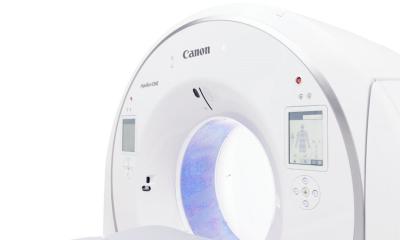Trauma Imaging
From head to toe, not forgetting the face
The number of radiological accident and emergency examinations had doubled within five years because many accident and emergency (A&E) patients are given CT scans even before having a comprehensive clinical examination.
Report: Michael Krassnitzer

This means that patients are scanned who do not really need urgent treatment, according to Associate Professor and private docent Gerd Schueller MD MBA, President of the Austrian platform Trauma Imaging. ‘So, it has become ever more important to look at the radiation doses involved, which has not really been an issue in accident and emergency radiology to date,’ he points out.
The solution has been to develop iterative reconstruction – i.e. a new algorithm, which may be very time-consuming but which also facilitates a reduced radiation dose during examination by around 50% – with consistent image quality. ‘All major CT manufacturers now offer such scanners,’ he says. ‘In recent years, this is the most important technological development in our field.’
Head injuries are always an important issue in emergency radiology. However, at the Emergency – Head to Toe conference, held by the firm Trauma Imaging in Vienna, those body parts that are usually given less attention in this context, were also part of the programme.
One of those parts is the face. ‘In the case of facial injuries, surgery is not always urgent – unless there is bleeding in the eye,’ he explains. If this occurs, retinal detachment can be a risk. However, trauma affecting the face or neck tends to go hand in hand with a high mortality rate (12%) because it often occurs in conjunction with craniocerebral injuries. A substantial, radiological description of the fracture(s) of those parts of the cranial bone responsible for facial stability is very important here. The face is divided into four vertical and four horizontal sections for this purpose. It is also important to check whether the muscles and tendons that hold the eyelids in place are intact.
In the case of abdominal trauma, 3-10% of cases involve urogenital injuries, with renal trauma the most common occurrence. Urogenital traumas are particularly dangerous in a polytrauma case. Isolated injuries, on the other hand, tend to heal spontaneously in 95-98% of cases. ‘We can’t really determine whether a patient needs surgery or not,’ the professor admits. Here the examination procedure of choice is a CT scan, with or without contrast media administration.
Radiology is obviously also used for urological emergencies such as haematuria, flank pain, colic and infection. Differentiation between colic and acute appendicitis is a particular challenge. Here, the radiologist also falls back on clinical diagnosis – patients with appendicitis experience relief from pain when lying down with their legs pulled up, whilst colic patients feel a strong need for movement.
Incidentally, MRI scans are used increasingly to diagnose appendicitis. ‘If the appendix is located behind the large intestine, there is no chance of diagnosing this with ultrasound,’ Schueller emphasises. Diffusion-weighted MRI scanning is very helpful by enabling radiologists to diagnose appendicitis within 15 minutes without contrast media administration. ‘Unfortunately,’ he adds ruefully, ‘there tend to be bottlenecks when it comes to the availability of MRI scanners.’
PROFILE
Gerd Schueller is founder and president of Emergency Radiology Schueller, a teleradiology firm based in Zurich. He qualified in medicine and radiology at Vienna University’s Medical Faculty, and became an Accident and Emergency Radiology consultant in the Department of General and Paediatric Radiology, at the University Hospital for Radiodiagnostics in the same city. He served as consultant radiologist and board member at the Spital Bülach in Switzerland from 2012-2014. He is a founder and board member of a numerous international radiology societies and, in June this year, was president of the Annual Congress of the European Society of Emergency Radiology (ESER).
03.12.2014










